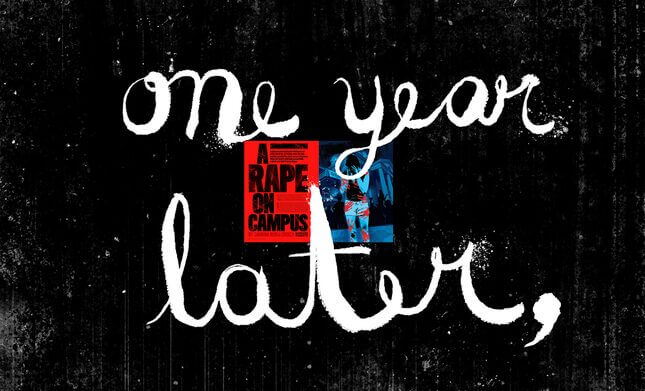The Rolling Stone Piece Would Have Hurt Sexual Assault Victims No Matter What
Latest

Last November, Rolling Stone published “A Rape on Campus,” a feature article detailing the alleged gang rape of a woman named Jackie at the University of Virginia. The article, written by Sabrina Rubin Erdely, has since been discredited, and its implications have been far-reaching for journalists, sexual assault prevention advocates, survivors and U.Va. students. But as a student and a journalist at U.Va., I’m frustrated to see much of the popular discourse overlook crucial points about Rolling Stone’s failure, which began long before the account was discredited—specifically, the story’s implications for survivors of sexual assault.
Many commentators—and even Rolling Stone’s own staffers—have argued the publication of a false account has set back important efforts against sexual assault, as it may dissuade survivors from telling their stories in the future and foster a culture of disbelief if survivors do come forward. It is equally important to question what the impacts of Rolling Stone’s article would have been if the story held up to scrutiny. Few seem to understand that, had the journalistic integrity of the piece stood, this article would still have had negative repercussions for survivors. If it had all worked out, and the magazine had published a factually sound expose on campus rape, where would we be in the movement against campus rape now?
When Erdely’s article first came out, journalists lauded her investigation as the expose on college rape we had all been waiting for—the narrative that would fundamentally change the national discussion of campus sexual assault. This reaction demonstrates how deeply our society misunderstands the realities of campus rape, most of which looks little like the story Erdely told.
Last spring, around the time Rolling Stone officially retracted its story, a fellow student and recent rape survivor quietly told me her story. Like many women, she had been raped by someone she knew well. After her rape she was in so much pain that she went to the hospital. But though she knew she had not consented to sex, she told me that for a long time she couldn’t bring herself to call what happened to her “rape.” This, she said, was because her experience wasn’t as violent as what happened to Jackie. She was not only traumatized by the experience of her assault—Rolling Stone’s article convinced her that her experience was not real.
This is because Erdely’s portrayal was not that of a typical student survivor. The story Erdely told showed rape at its most violent, and students and college administrators at their most apathetic. She took extremes and portrayed them as the norm—when the realities of campus rape and schools’ adjudication of it are much, much more complex. The story Erdely made her focus is far from representative of the sexual assaults that an estimated one in five women will experience in college.
-

-

-

-

-

-

-

-

-

-

-

-

-

-

-

-

-

-

-

-

-

-

-

-

-

-

-

-

-

-

-

-

-

-

-

-

-

-

-

-








































